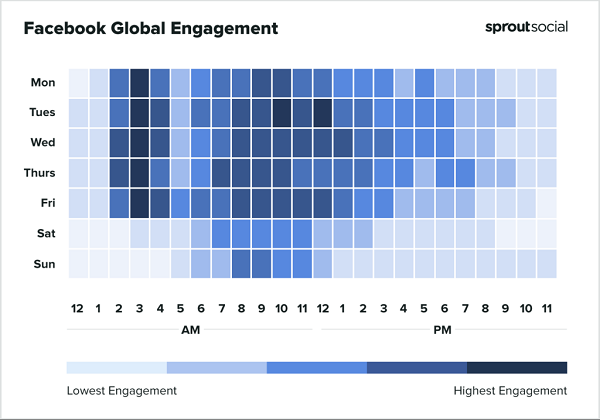While Facebook is deemed to be obsolete by some 2 billion, people keep logging into it daily. Once they are there, they spend some time looking around, engaging in groups, and posting content. And although it’s no longer the cool place for younger audiences to hang out, it is still the most-used social media platform in the world.
All of this means that Facebook is still a critical consideration for any business wanting to maintain a digital presence, and if you need pointers on how to do it in 2023, you’ve come to the right place.
In this article, we’ll be sharing our own insights, the insights provided by the ever-capable Social Media Today page, and other respectable sources; rest assured that the information here is relevant and verified.
Facebook’s Algorithm
Before diving straight into posting strategies, you must have certain know-how on Facebook’s News Feed algorithm and how it amplifies content in the app.
Here are the three elements it is based on:
Content origin – the algorithm accounts for how often a person interacts with a page or a profile. If they tend to engage or comment on content that comes from a certain page or profile often, it is very likely that the algorithm will show more of their content. Meaning the more people interact with the content on your page, the more often they will see it.
The recency of content – recency of content is still a huge factor for the News Feed algorithm. Meaning you should post your content when your audience is online and likely to see it. If you manage to catch their attention and they interact with your content, there’s a great chance it will linger on for longer in people’s feeds.
Engagement predictions – Facebook’s algorithm is also quite good in predicting people’s engagement habits and will optimize the content based on that. So, if it deems that your content will make people engage with it, it will disperse it more widely.
Of course, the algorithm isn’t stagnant, as it keeps getting updated and evolving almost every day. However, these rules still do apply, as does the tendency for the algorithm to recommend more and more AI-calculations-based content to the platform’s users.
This could help you maintain or improve your reach if you manage to deliver content that is truly relatable for your audience. On the other hand, do not forget that Meta strongly favors short-format videos and will continue to do so in the upcoming year.
Now, as to what your content should talk about. Leaning into this insightful, albeit a bit older analysis by Buffer, which analyzed 777 million posts from various Facebook pages, the content that got the most engagement and reach was either inspirational, practical, or funny. So, keep that in mind when sketching out future content.
REDUCE MANUAL WORK OF RUNNING INFLUENCER CAMPAIGNS
BY 80%
Best Practices for Posting
Keep your posts short; their only purpose (usually) is to catch attention and drive people to click on the attachment in your post. Also, nobody has the time to read long stories each time they open Facebook. So, the optimal length for a description is around 25 to 55 words.
Another factor for shortening the posts is how they look on the mobile app; that is, all of the longer than 80-word descriptions are cut to fit with a ‘See more’ button added at the bottom. So, if your hook is below that, chances are people will scroll through your post.
As for the type of content – video is the ruler, with lives gathering the most engagement. Also, posts with images do better than plain text ones, while plenty of pages have also seen some success by adding memes to their usual feeds.
That said, don’t forget that Meta is still pushing short-format video as its main type of content. So much so that now you can create Reels even if you don’t have any video material.
Another thing you could do is to check Facebook’s Ad Library to spy a little on your competition. Check what they are doing and which ads have been running the longest. Chances are they’re pretty successful.
When it comes to Facebook and hashtags, there’s no definite answer whether they’re working or not. Trying to add a couple of relevant ones to your posts won’t hurt, though.
And as for posting frequency, don’t overdo it with Facebook, as the News Feed algorithm limits a page’s exposure. So, the advice here would be this: try posting three times a week, gradually increasing to five. Then, analyze which posts worked the best and when they’ve been posted. This should give you a solid idea of when and how often to post.
In terms of the actual times of posting, rely on the times when your audience is online. However, you could also trust this chart by Sprout Social showing the best times to post, too.

As you can see in the chart, the best time to post is around three in the morning. It is probably because it’s downtime for most, and there isn’t usually much stuff posted at the time, and posting in these downtimes might actually allow you to reach more people. Yet again, experiment with some, and don’t rely on these charts blindly because they just might not reflect the case with your actual audience.
Engagement
Engagement isn’t a one-way street; you have to participate in it, too. Meaning you should always respond to comments promptly and monitor them whenever there’s a need. Keeping up your end of engagement will help you build trust and authenticity while comments themselves count as engagement to the News Feed algorithm.
Another thing you could do is create a fan page for your business, listen to what people have to say about your product, and guide relevant conversations to your DMs for further decision-making processes.
These pointers here aren’t to be preached but rather leaned-on in Facebook’s jungle. To establish your presence there, you’ll have to analyze and analyze again, experiment, mold your approach to your specific audience, and deliver them with the best quality content that fits right in with their interests.
DATA-BASED INFLUENCER MARKETING SOLUTIONS






